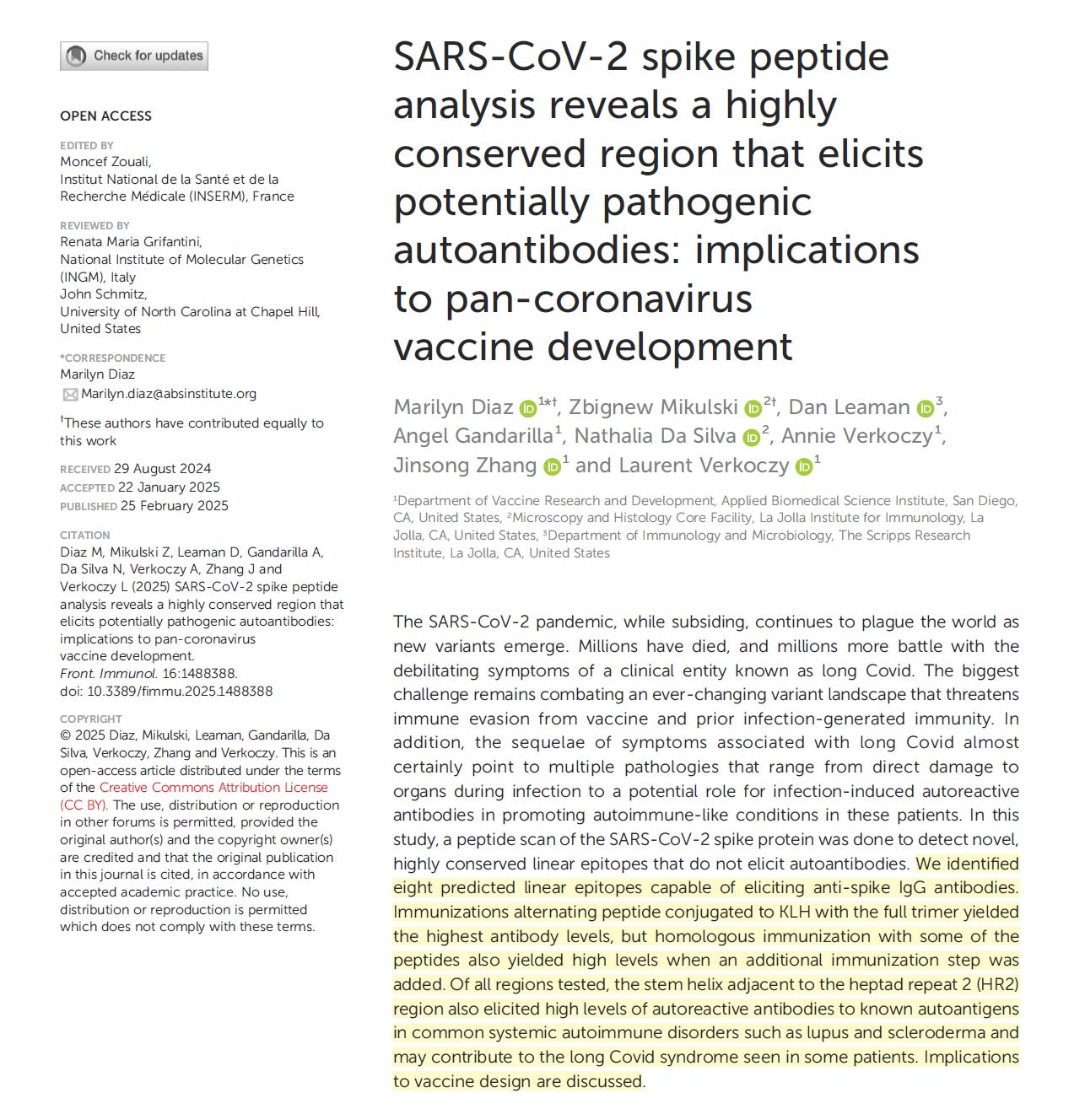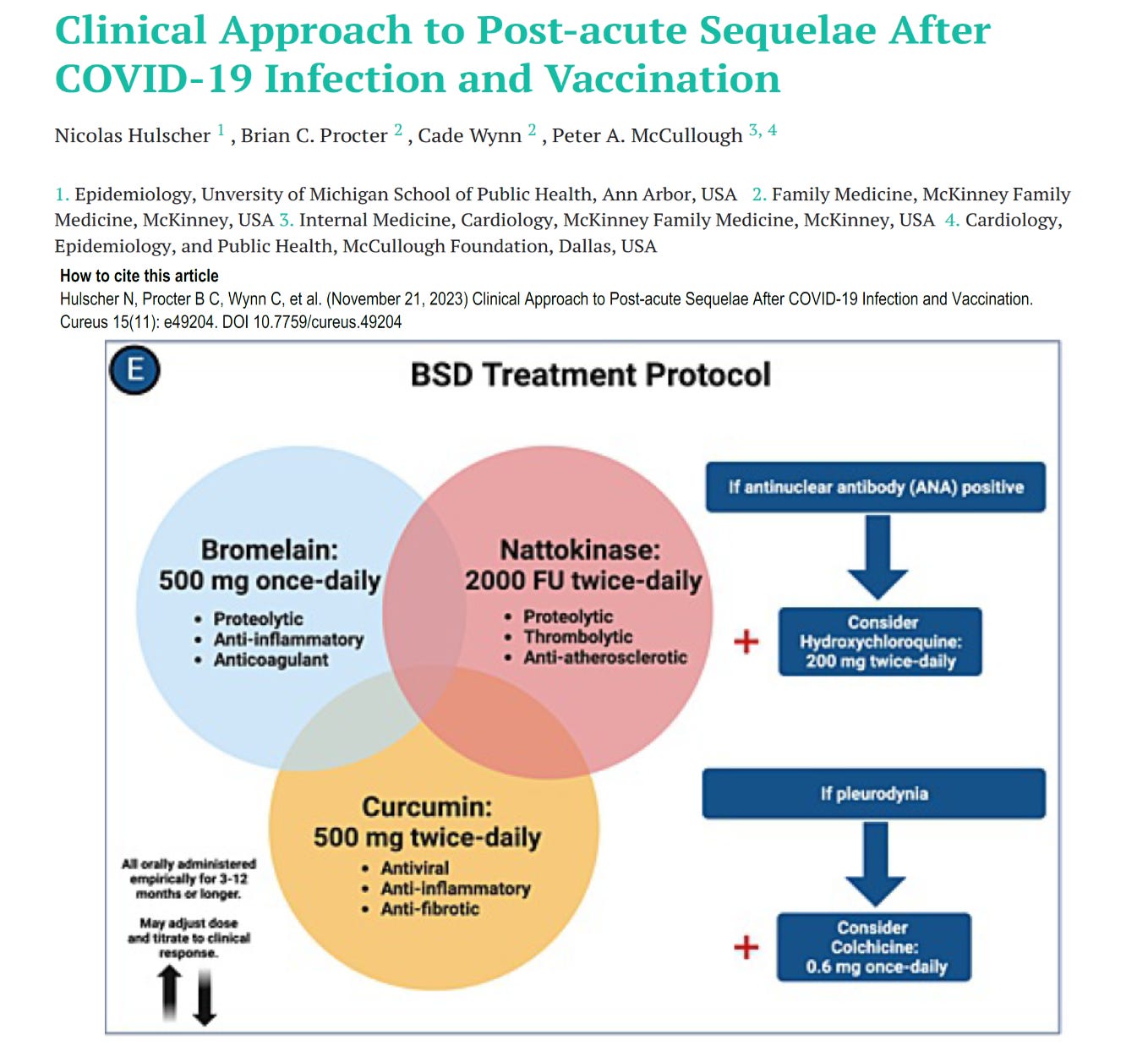Spike Protein Induces the Antinuclear Antibody (ANA)
Autoimmune Conditions Explained by Analysis of Spike Protein, Strong Impetus for Spike Detoxification
By Peter A. McCullough, MD, MPH
Some patients with long-COVID or post-vaccine injury syndromes develop autoimmune conditions similar to systemic lupus, rheumatoid arthritis, mixed connective tissue disease, and systemic scleroderma. For years now, I have routinely checked the blood antinuclear antibody (ANA) test in patient with long-pandemic syndromes.

Diaz et al performed a detailed preclinical study of the Spike protein in mice to determine which part of the protein could induce production of autoantibodies:
To identify which autoantigens may be associated with the positive ANA results, positive sera (even slightly so) were tested against an array of common autoantigens associated with autoimmunity. Sera from all mice immunized with LHR2-B8 peptide contained autoantibodies that recognized a variety of autoantigens associated with systemic autoimmunity in an autoarray assay (Table 1). Strikingly, all mice immunized with this peptide had high levels of anti-dsDNA autoantibodies, a hallmark of systemic lupus erythematosus (SLE) (15): They were also highly positive for La/SSB antigen (Table 1), a 47-kDa protein involved with small RNAs synthesized by RNA polymerase II, typically seen in Sjogren’s syndrome and SLE patients (16). Most sera from mice immunized with the LHR2-B8 peptide were also positive for an additional variety of disease associated autoantigens such as the PM/Scl100 antibodies seen in polymyositis and scleroderma patients [Table 1; (17, 18)]. Consistent with the ANA results, sera from mice immunized with other peptides were negative formost antigens. Also consistent with ANA results, some mice that received the Hexapro SARS2-CoV spike were positive for anti-dsDNA (SLE), U1-snRNP70 kDa [associated with SLE and mixed connective tissue disease (19)], gliadin [associated with celiac disease (20)], and, to a lesser degree, tissue transglutaminase [celiac disease (21)].
These findings imply it is indeed the SARS-CoV-2 Spike protein from infection or vaccination that is causing autoimmunity. This study has several important implications: 1) patients with long-pandemic syndromes should have autoimmune testing (ANA reflexive panel, rheumatoid factor, anti-citrullinated peptide (ACP), and gluten intolerance associated anti-gliadin antibodies, 2) there is a strong rationale to aid the body in clearing Spike protein with McCullough Protocol Base Spike Detoxification before an bona fide autoimmune syndrome develops.

Please subscribe to FOCAL POINTS as a paying ($5 monthly) or founder member so we can continue to bring you the truth.
Peter A. McCullough, MD, MPH
President, McCullough Foundation
www.mcculloughfnd.org





Hi Doc! We are looking forward to seeing you at our church in June! Dana and I would love to make you two or more dinner again. Chat about this horrible spike thrombus I have too. 🙏🏼🤙🏼🙏🏼
It’s important for everyone to know that when spike proteins enter the bloodstream, our T-cells cannot directly react to them. Antigen presenting cells like macrophages and dendritic cells take in the spike protein, chop it into smaller pieces called peptides, and display them on their surfaces on MHC type 2 sites to T-helper cells. The T-helper cells have been trained in the thymus gland to recognize the shapes of self-proteins to protect us from autoimmunity. There is a very complicated but necessary communication between the T-helper cells and the B-cells (B-cells make the antibodies) to make sure antibodies are not created against proteins that look like self. Here’s the part people need to know: B-cells are also antigen presenting cells and can directly react to the circulating spike proteins. Some people crank out so many spike proteins that their B-cells autoactivate and start releasing dangerous antibodies that result in autoimmune conditions. Just for fun, plug that into AI and see what it says.